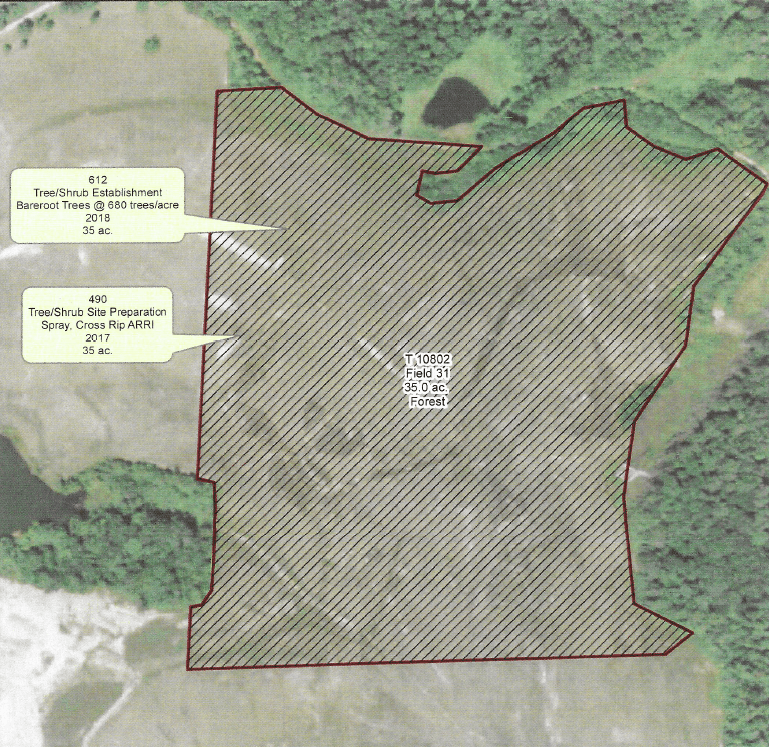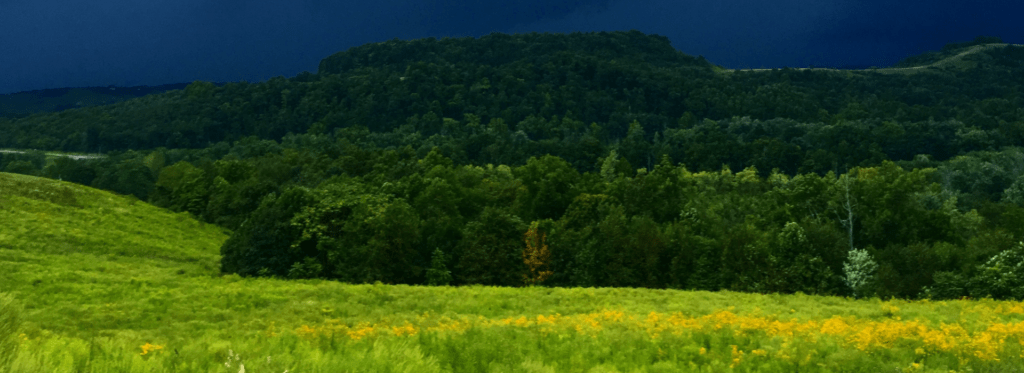Carbon Offset Success Stories
Reforestation Carbon Offset Project: Flood Prone Farm Fields
This carbon offset reforestation project converted over 70 acres of marginal cropland in Coshocton County and in Guernsey County, Ohio to permanent woodland. The former cropland is located near Wills Creek and is in the Wills Creek Lake floodplain. The fields were often wet and flooded, resulting in frequent crop losses due to excess moisture and flooding. When flooding did occur, it washed off any agricultural products and byproducts, including but not limited to pesticides, herbicides, and fertilizer.
The decision was made that it would be better for the local ecosystem, the environment in general, and for the landowner to convert this land into a permanent stand of hardwood trees. The site was prepared by removing debris and driftwood and controlling weeds. Subsequently, bareroot trees were planted across the entire plot area at approximately 680 trees per acre.
To download a PDF of the Reforestation Project Summary Document, feel free to click the download link below:
|
Project Summary 2005 | ||
|
Project/Subproject |
Project Acreage |
# of Trees |
|
Carbon Offset on Marginal Farmland |
|
|
|
Section A |
11.83 |
8100 |
|
Section B |
12.92 |
8800 |
|
Section C |
6.54 |
4500 |
|
Section D |
18.27 |
13500 |
|
Section E |
22.11 |
15500 |
|
Totals |
71.7 |
50400 |
Before/After Comparison
This planting project took place in 2005, and it is clearly visible from the photos below that the planted trees are growing very well. In the satellite image below, one can compare the reforested crop field (in green with visible rows of trees, center-left) with the flooded and damp crop field (right of center).

Click here to view the full details of this carbon offset success story!
Reforestation of Reclaimed Strip Mine 2017-2018
This carbon offset success story details a project that converted 35 acres of reclaimed strip mine in Guernsey County, Ohio to permanent woodland. The site was prepared by removing debris, controlling weeds, and planting bareroot trees and shrubs of mixed species to emulate the natural ecosystem before mining operations took place on this land. The site was prepared in 2017 and planted in early 2018. Trees were planted at a density of 680 trees/acre to yield a total of 23,800 trees. All trees were planted by hand, while site preparation used a combination of hand labor and heavy equipment.
| Project Summary | ||
| Project/Subproject | Project Acreage | # of Trees |
| Strip Mine Reforestation | 35.0 | 23800 |
For a PDF version of this Carbon Offset Project Summary, click the download link below.


Click here to view the full details of this carbon offset success story!
Carbon Offset Project on Former Pasture
This carbon offset success story details a project that converted over 28.9 acres of former cattle pasture in Coshocton County, Ohio to permanent woodland. In places this land is steep and it experienced significant erosion when grazed short and trampled by cattle. Additionally, part of the land included in this project is on a reclaimed strip mine, which compounded erosion and runoff issues.
The decision was made that it would be better for the local ecosystem, the environment in general, and for the landowner to convert this land into a permanent stand of hardwood trees. The site was prepared by removing debris and driftwood and controlling weeds. Subsequently, bareroot trees were planted across the entire plot area at approximately 680 trees per acre. For this project, all trees were planted by hand.
If you would like a PDF version of the information on this page, feel free to click the download link below:
|
Project Summary | ||
|
Project/Subproject |
Project Acreage |
# of Trees |
|
Reforestation of Former Pasture |
|
|
|
Section A |
18.7 |
12700 |
|
Section B |
10.3 |
7000 |
|
Totals |
28.9 |
19700 |
Before/After Comparison
This planting project took place in 2002, and it is clearly visible from the photo below that the planted trees are growing very well. In the satellite image below, one can compare the pasture with areas that were not planted in trees at the time of the project.

Click here to view the full details of this carbon offset success story!

